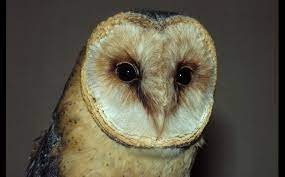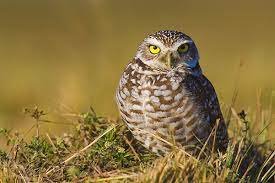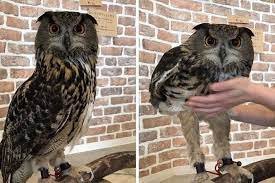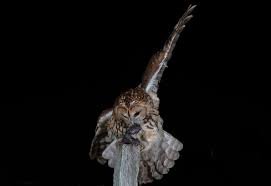The state of Colorado is home to fourteen owl species, all of which are quite distinct from one another. They populate all of the state’s ecosystems and can be found in every region. Size, shape, coloration, habitat, nutrition, vocalization, and even behavior can vary greatly from one species to the next.
Barn Owls

Barn Owls are the only members of the Tytonidae family found in Colorado; the other owls are all members of the Strigidae family, also known as the “real owls.” When compared to other owls, what sets the barn owl apart? The primary distinction between these owls and genuine owls is their unusual heart-shaped faces. Barn Owls, unlike other owls, have beaks that point down like human noses. Their common practice of roosting and reproducing in unusual places including outbuildings, lofts, and barns gives rise to their moniker.
Eastern Screech-owl

The Eastern Screech-owl is a year-round inhabitant of eastern Colorado, close to the Utah border. Smaller than a robin, these owls get their food from a wide variety of sources, including insects, rodents, and even other birds. You’re most likely to see an Eastern Screech-owl in its nesting tree, where it is extremely well disguised. If you hear a lot of chirping and alarm calls from birds, you might have an Eastern Screech-owl in the area. Screech-owls are monogamous, and the nesting boxes are often accepted by the paired-off birds.
Flammulated Owl

The feathers of the Flammulated Owl are a mix of grey and rust. Being rather small for an owl, they are adept at hiding in thick forests. These birds are monogamous, with roughly 75% remaining in the same breeding couple for life. Flammulated Owls are fiercely protective of their vast, 5- to 6-acre territories. They are territorial and will drive intruder owls away from their areas, but actual physical conflict is unusual.
Very little is known about this bird, however, it appears to spend the winter in Mexican woodlands. They prefer to nest in dense, coniferous forests, so that’s where you’ll most likely see them.
Only during the spring and summer do these birds become common sights in Colorado. They don’t live there year-round, so you’ll have to go to a specific part of the state to see them. Nests of Flammulated Owls have been spotted most frequently in the state’s central areas. During the harsher winter months in Colorado, you won’t be able to spot one of these owls.
Short-eared Owl

This owl, which is a tawny brown with mottled coloring and is about as big as a barn owl, is common throughout North America. They like to do their daylight hunting while their preferred prey, voles, are active. Among the owl species, this one is one of the easiest to spot during the day. Open areas are typical habitats for short-eared owls. At dusk or morning, in fields, grasslands, meadows, or even airports, is when you have the highest chance of spotting them in Colorado.
These owls typically construct their nests directly on the ground in grassy places. If the parent bird has to abandon its nest to scare away a predator, it will defecate on the eggs to protect them from further attack. Short-eared Owls, like Kildeer, will hop away from their nest to trick predators into thinking they’re crippled.
The short-eared owl is known for its low volume of vocalizations. When they do speak, though, these birds’ call is remarkably similar to that of a cat trying to find a mate.
Western Screech Owl

The Western Screech Owl is a little bird without ear tufts and a broad, spherical skull. It features a white face disc with black around the edges and brilliant yellow eyes. The bird’s upper body is streaked gray-brown, while the underside is white with dense brown markings.
Also, know How big is a great horned owl?
Individual birds may display slight variations in plumage, but they will always have a barred tail. The Western Screech Owl can be up to 20 cm in length and has a wingspan of about 50 cm.
Across western North America, you can spot this owl in a variety of habitats, including open woodlands, farmlands, parks, and even urban areas. Nighttime is when it is most active and can be spotted searching for food from perches on fence posts or low branches. Even though it prefers rodents like mice and voles, the Western Screech Owl will also eat birds, reptiles, and insects.
Northern Pygmy-Owl

This tiny owl shares its diminutive stature with the flamboyant owl. Two large dark eye patches on the back of their heads are a distinguishing trait. They make their home in the Colorado highlands and foothills, where they raise their young in woodpecker holes. They are nocturnal, sleeping during the day, and eating mostly rodents and birds. The males have a unique, rhythmic call.
Spotted Owl

Spotted owls are a diverse species, with three recognized subspecies. Although it is one of the least commonly observed owls in Colorado, the Mexican Spotted Owl is one of these. They build their nests on the sides of cliffs and canyon walls in places like woodlands and canyons. Spotted owls in Mexico are listed as endangered or threatened by both the federal and state governments.
Boreal Owl

The Boreal Owl is a medium-sized species of owl distinguished by its round head and lack of ear tufts. Its beak is golden and its eyes are very huge and dark. It has a dark body with white dots. The Boreal Owl is endemic to the forested regions of the far north of the North American continent. The mountains of Colorado are the most typical place to spot it.
The Boreal Owl is strictly a nocturnal species. It spends the day roosting in trees. It preys on birds and rodents and the like. The Boreal Owl pounces from a tree branch to capture its prey. In some cases, it will consume a whole animal, including the skeleton. The Boreal Owl is a nocturnal bird that prefers to avoid human contact. A bird’s song can be heard if you come across one.





